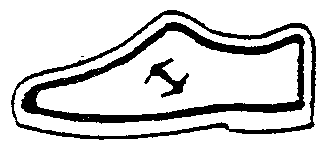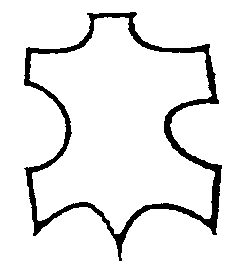- Latest available (Revised)
- Point in Time (23/03/1996)
- Original (As made)
The Footwear (Indication of Composition) Labelling Regulations 1995
You are here:
- UK Statutory Instruments
- 1995 No. 2489
- Schedules only
- Show Geographical Extent(e.g. England, Wales, Scotland and Northern Ireland)
- Show Timeline of Changes
More Resources
Changes over time for: The Footwear (Indication of Composition) Labelling Regulations 1995 (Schedules only)
Alternative versions:
- 23/03/1996- Amendment
- 23/03/1996
Point in time
Status:
Point in time view as at 23/03/1996.
Changes to legislation:
There are currently no known outstanding effects for the The Footwear (Indication of Composition) Labelling Regulations 1995.![]()
Changes to Legislation
Revised legislation carried on this site may not be fully up to date. At the current time any known changes or effects made by subsequent legislation have been applied to the text of the legislation you are viewing by the editorial team. Please see ‘Frequently Asked Questions’ for details regarding the timescales for which new effects are identified and recorded on this site.
Regulation 3(2)
SCHEDULE 1U.K.NON-EXHAUSTIVE LIST OF FOOTWEAR COVERED BY THESE REGULATIONS
“Footwear” may range from sandals with uppers consisting simply of adjustable laces or ribbons to thigh boots the uppers of which cover the leg and thigh. Among the products included therefore are—
(i)flat or high-heeled shoes for ordinary indoor or outdoor wear;
(ii)ankle-boots, half-boots, knee-boots and thigh boots;
(iii)sandals of various types, “espadrilles” (shoes with canvas uppers and soles of plaited vegetable material), tennis shoes, running and other sports shoes, bathing sandals and other casual footwear;
(iv)special sports footwear which is designed for a sporting activity and has, or has provision for the attachment of, spikes, studs, stops, clips, bars or the like and skating boots, ski boots and cross-country ski footwear, wrestling boots, boxing boots and cycling shoes. Also included are composite articles made up of footwear with (ice or roller) skates attached;
(v)dancing slippers;
(vi)footwear formed from a single piece, particularly by moulding rubber or plastics, but excluding disposable articles of flimsy material (paper, plastic film, etc., without applied soles);
(vii)overshoes worn over other footwear, which in some cases are heel-less;
(viii)disposable footwear, with applied soles, generally designed to be used only once;
(ix)orthopaedic footwear, other than medical devices to which the Medical Devices Regulations 1994(1) apply.
For reasons of homogeneity and clarity, and subject to the provisions mentioned in the description of the products covered by Directive 94/11/EC, products covered by Chapter 64 of the combined nomenclature (CN) may, as a general rule, be regarded as falling within the scope of Directive 94/11/EC
Regulation 5(4)
SCHEDULE 2U.K.
1. Pictograms or written indications concerning the parts of the footwear to be identified.U.K.
Commencement Information
I2Sch. 2 para. 1 in force at 23.3.1996, see reg. 1
2. Pictograms or written indications concerning materials used in the composition of footwear.U.K.
Commencement Information
I3Sch. 2 para. 2 in force at 23.3.1996, see reg. 1
3. Any pictogram concerning material shall appear on the label beside the pictogram of the relevant footwear part.U.K.
Commencement Information
I4Sch. 2 para. 3 in force at 23.3.1996, see reg. 1
4. The dimensions of any pictograms must be sufficiently large to make it easy to understand the information contained therein.U.K.
Commencement Information
I5Sch. 2 para. 4 in force at 23.3.1996, see reg. 1
5. Any written indication shall be in the English Language.U.K.
Commencement Information
I6Sch. 2 para. 5 in force at 23.3.1996, see reg. 1
Regulation 9
SCHEDULE 3U.K.COMPLIANCE NOTICE
1. The notice shall—U.K.
(a)specify the description of the footwear to which the notice relates;
(b)state that the enforcement authority suspects that a contravention of a provision of these Regulations has taken place and the reasons for that suspicion;
(c)specify the provision referred to in paragraph (b) above;
(d)require the person upon whom the notice is served—
(i)to take such action to end the contravention as may be specified by the notice within such period as may be specified by the notice; or
(ii)to provide evidence within that period to the satisfaction of the enforcement authority that all the provisions of these Regulations have been complied with; and
(e)warn that person that if the non-conformity continues (or if satisfactory evidence has not been produced under sub-paragraph (ii) of paragraph (d) above) within the period specified in the notice, further action may be taken under these Regulations in respect of that footwear or any footwear of the same type supplied by that person.
Commencement Information
I7Sch. 3 para. 1 in force at 23.3.1996, see reg. 1
2. The notice may include directions as to the measures to be taken by that person to secure compliance with the provisions of these Regulations, including different ways of securing compliance.U.K.
Commencement Information
I8Sch. 3 para. 2 in force at 23.3.1996, see reg. 1
Options/Help
Print Options
PrintThe Whole Instrument
PrintThe Schedules only
Legislation is available in different versions:
Latest Available (revised):The latest available updated version of the legislation incorporating changes made by subsequent legislation and applied by our editorial team. Changes we have not yet applied to the text, can be found in the ‘Changes to Legislation’ area.
Original (As Enacted or Made): The original version of the legislation as it stood when it was enacted or made. No changes have been applied to the text.
Point in Time: This becomes available after navigating to view revised legislation as it stood at a certain point in time via Advanced Features > Show Timeline of Changes or via a point in time advanced search.
See additional information alongside the content
Geographical Extent: Indicates the geographical area that this provision applies to. For further information see ‘Frequently Asked Questions’.
Show Timeline of Changes: See how this legislation has or could change over time. Turning this feature on will show extra navigation options to go to these specific points in time. Return to the latest available version by using the controls above in the What Version box.
More Resources
Access essential accompanying documents and information for this legislation item from this tab. Dependent on the legislation item being viewed this may include:
- the original print PDF of the as enacted version that was used for the print copy
- lists of changes made by and/or affecting this legislation item
- confers power and blanket amendment details
- all formats of all associated documents
- correction slips
- links to related legislation and further information resources
Timeline of Changes
This timeline shows the different points in time where a change occurred. The dates will coincide with the earliest date on which the change (e.g an insertion, a repeal or a substitution) that was applied came into force. The first date in the timeline will usually be the earliest date when the provision came into force. In some cases the first date is 01/02/1991 (or for Northern Ireland legislation 01/01/2006). This date is our basedate. No versions before this date are available. For further information see the Editorial Practice Guide and Glossary under Help.







